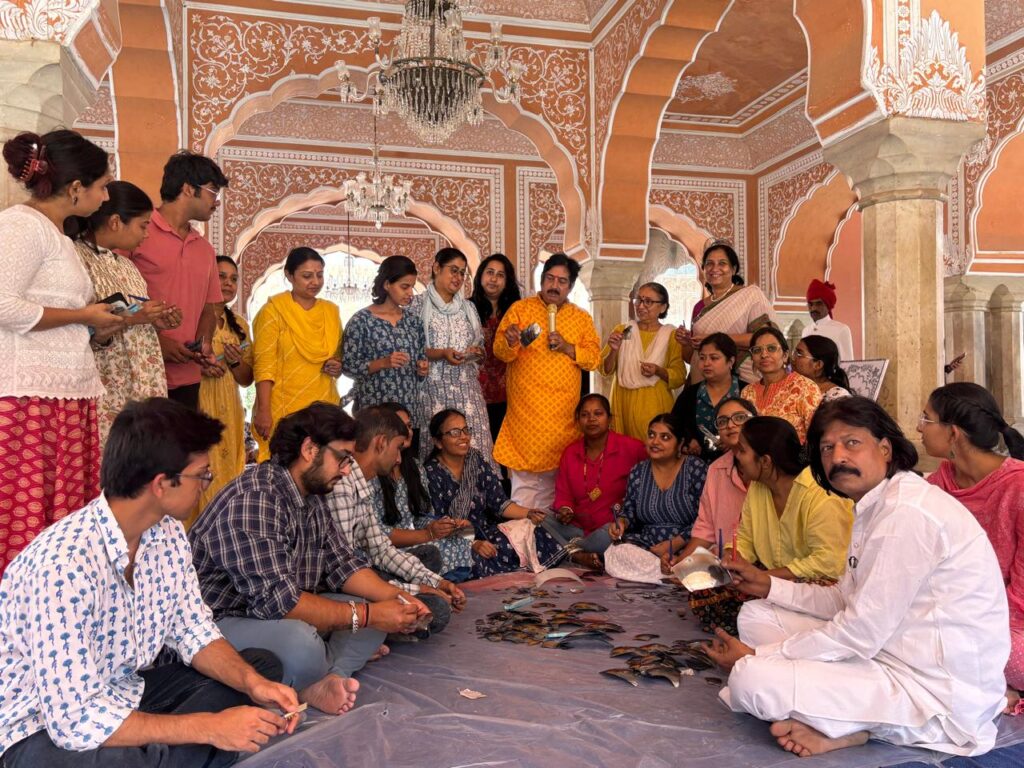A special 15-day training session in Thikri (traditional mirror inlay work) commenced at the ongoing month-long Cultural Heritage Training Camp at Jaipur’s City Palace. This session is dedicated to the renowned Indian inlay art of Thikri, which has for centuries adorned palaces and temples. Camp coordinator and OSD, Arts and Culture, City Palace, painter Ramu Ramdev shared that the session is being organized under the initiative of the erstwhile royal family to revive the near-extinct art form and pass it on to the new generation. The primary element used in this art—glass—has been specially procured from Gujarat.
During the session, Ramu Ramdev is training participants in the finer aspects of painting and composition, while senior Thikri artists from Jaipur, Shankar Lal Kumawat and Badri Narayan Kumawat, are providing technical instruction. On the first day, experts introduced participants to foundational techniques such as holding the stylus, glass cutting, applying pressure on glass, pattern design, and the historical context of the art form.
The session began with participants practicing on small pieces of glass using a special stylus designed with a diamond-shaped tip to cut the glass. The glass used in this art is typically red, green, and blue—adding vibrant, ornamental charm to the décor. One of the most celebrated examples of this art is Jaipur’s Sheesh Mahal in Amer, where walls and ceilings are intricately decorated with this technique.
Notably, the Cultural Heritage Training Camp is being organized by the Maharaja Sawai Man Singh II Museum Trust in collaboration with Rangreet—an organization dedicated to traditional arts—and Saraswati Kala Kendra. Participants are receiving instruction from renowned experts in a range of traditional art forms, including painting, Ala-Gila, Araish, Dhrupad, Kathak, flute, calligraphy, and Vedic astrology. The camp will conclude on June 20.

